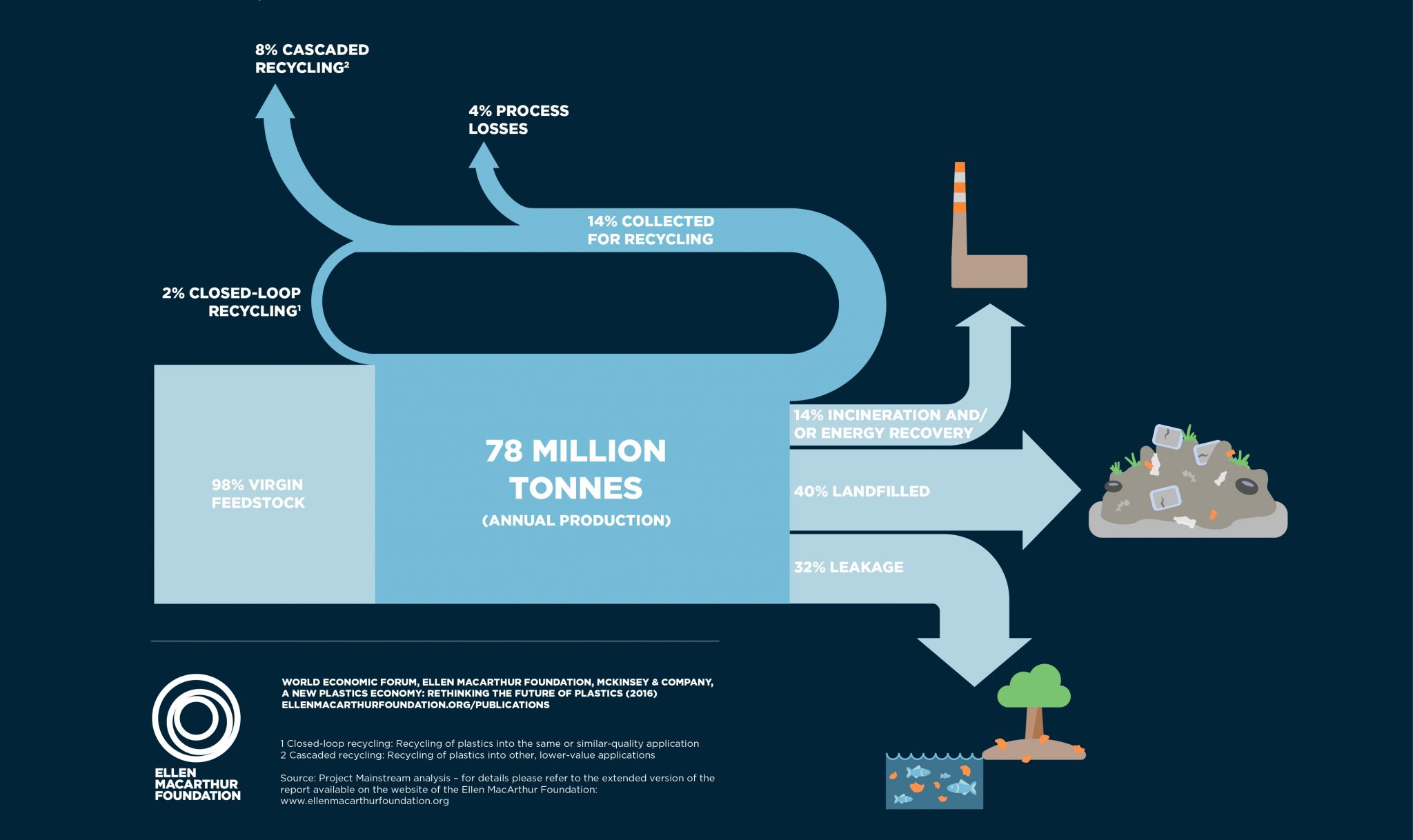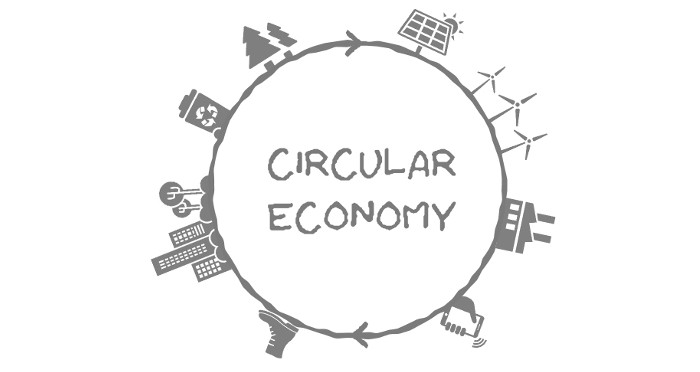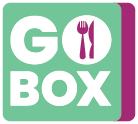Why Reuse
Why Reuse
We’ve got a lot to say on the topic. Not only because we love talking about reuse (so much!), but also because the problem we’re working to solve is very complex.
We’ve got a lot to say on the topic. Not only because we love talking about reuse (so much!), but also because the problem we’re working to solve is very complex.
The problem with “waste” doesn’t begin when something is thrown away. It’s very important to recognize that products create environmental, social, and economic impacts across their lifecycle – from production to disposal.
We’ll dig into why single use products specifically are so problematic below, but let’s start with a general overview of the benefits that the GO Box reuse system provides in comparison:
The problem with “waste” doesn’t begin when something is thrown away. It’s very important to recognize that products create environmental, social, and economic impacts across their lifecycle – from production to disposal. We’ll dig into why single-use products specifically are so problematic below, but let’s start with a general overview of the benefits that the GO Box reuse system provides in comparison:
Saves Resources
By reusing resources we've already extracted, like oil or timber, we can avoid additional extraction.
Prevents Carbon Emissions
Pollutants from manufacturing and transporting new products are prevented through reuse.
Eliminates Landfill & Litter
Reuse reduces landfill waste and prevents litter pollution on land and in marine environments.
Professionally Sanitized
GO Box reusables are sanitized using a high heat commercial washing machine. Mass produced single-use products do not undergo a sanitization process during production.
A System Solution
GO Box is a not a product. The GO Box system and service model make reuse accessible through shared assets that do not require personal ownership of more products.
Locally Owned & Grown
GO Box is building a local circular economy connecting local manufacturers and customers around locally reusable packaging, providing positive environmental, social and economic benefits to our local community.
Now, let’s talk about products designed for a single use, such as a standard takeout container.
such as a standard takeout container.
Single use products are indicative of a take-make-waste system: we take resources from the planet to make products, we use them for a short time and then we throw them away. This system can also be referred to as a linear economy. In the U.S., the linear economy produces and disposes of over 180 billion single use takeout packaging products annually.
We live on a planet of limited resources – resources that due to their limited supply, should be highly valued. But the linear economy disassociates resource value from the products produced, pretending instead that natural resources will be available endlessly.

The linear economy is hugely wasteful and wildly expensive when we consider the economic and environmental implications that comes with it. Per the Ellen MacCarthur Foundation’s The New Plastics Economy report, “95% of plastic packaging material value, or $80-120 billion annually, is lost to the economy.” The total cost of plastic packaging, including after-use externalities (such as cleaning up plastic pollution) plus the cost associated with carbon emissions from production is “conservatively estimated at $40 billion annually.” Such loss may not come as a surprise considering how each stage of the single use packaging lifecycle – from design to production to transportation to resell to disposal – is potentially managed independently, with no coordination or collaboration between stakeholders.
But what about recycling? Unfortunately, our current plastic recycling efforts fall far short of our hopeful intentions. Again, per the The New Plastics Economy report, “only 14% of plastic packaging is collected for recycling. When additional value losses in sorting and reprocessing are factored in, only 2% of material value is retained for a subsequent use. “ Here’s what the global flows of plastic packaging looked like in 2013:
Single use products are indicative of a take-make-waste system: we take resources from the planet to make products, we use them for a short time and then we throw them away. This system can also be referred to as a linear economy. In the U.S., the linear economy produces and disposes of over 180 billion single use takeout packaging products annually.
We live on a planet of limited resources – resources that due to their limited supply, should be highly valued. But the linear economy disassociates resource value from the products produced, pretending instead that natural resources will be available endlessly.

The linear economy is hugely wasteful and wildly expensive when we consider the economic and environmental implications that come with it. Per the Ellen MacArthur Foundation’s The New Plastics Economy report, “95% of plastic packaging material value, or $80-120 billion annually, is lost to the economy.” The total cost of plastic packaging, including after-use externalities (such as cleaning up plastic pollution) plus the cost associated with carbon emissions from production is “conservatively estimated at $40 billion annually.” Such loss may not come as a surprise considering how each stage of the single use packaging lifecycle – from design to production to transportation to resell to disposal – is potentially managed independently, with no coordination or collaboration between stakeholders.
But what about recycling? Unfortunately, our current plastic recycling efforts fall far short of our hopeful intentions. Again, per the The New Plastics Economy report, “only 14% of plastic packaging is collected for recycling. When additional value losses in sorting and reprocessing are factored in, only 2% of material value is retained for a subsequent use. “ The graphic below shows the global flows of plastic packaging in 2013.

Beyond these statistics are people and animals and plants and other forms of life which are harmed by the linear economy system. Current research suggests that there are over 150 million tons of plastics in our global marine environments today. By 2050 – when it’s predicted that the total volume of plastics in our oceans will outweigh fish – what will become of those fish, and the fish that eat those fish, and the fisherpeople that depend on catching fish to feed and sustain their families and all of the other intricate interconnections that exist on the planet?
Beyond these statistics, there are people and animals and plants and other forms of life that are harmed by the linear economy system. Current research suggests that there are over 150 million tons of plastics in our global marine environments. By 2050, the total volume of plastics in the ocean are predicted to outweigh fish. What will become of those fish, and the fish that eat those fish, and the fisherpeople that depend on catching fish to feed and sustain their families and all of the other intricate interconnections that exist on the planet?
Clearly, new systems are needed to address these challenging systemic problems.
Clearly, new systems are needed to address these challenging systemic problems.
A new systems model may be found in the circular economy concept. A circular system and/or economy seeks to design out waste and pollution, keep products and materials in use and regenerate natural systems. The best example of a circular system is nature itself, which produces no non-biodegradable waste and in fact regenerates itself through the reuse of it’s own resources.

There is a growing energy and enthusiasm for circular systems across a wide range industries and in countries around the world. The GO Box team is highly motivated and incredibly excited to be working in this space, to have the opportunity to design a better system through collaboration, to redefine the value of packaging, and to serve as a circular economy case study. We remain humble students of the circular economy and know that as a society, we have a long but hopeful journey ahead of us to build the future we wish to see.
Lastly, we acknowledge that no human designed system can operate without some impact on the environment, including GO Box – we recognize the need for energy and resources to operate our service. We respect and are confident in the many scientific lifecycle analyses comparing single use, recyclable and reusable packaging, which suggests reusing packaging (of any material) has declining impact with each reuse and significantly lower impact than single use and recyclable packaging if reused many times. For more information, visit our Reuse Resources page for more information about reuse and the circular economy, check out our About GO Box page for more about our team, and reference our FAQ page for answers to additional questions you may have.
Page last updated 5/20/2020.
Icons were designed by Freepik from Flaticon.
A new systems model may be found in the circular economy concept. A circular system and/or economy seeks to design out waste and pollution, keep products and materials in use, and regenerate natural systems. The best example of a circular system is nature itself, which produces no non-biodegradable waste, and regenerates itself through the reuse of its own resources.

There is a growing energy and enthusiasm for circular systems across a wide range of industries and in countries around the world. The GO Box team is highly motivated and incredibly excited to be working in this space, to have the opportunity to design a better system through collaboration, to redefine the value of packaging, and to serve as a circular economy case study. We remain humble students of the circular economy and know that as a society, we have a long but hopeful journey ahead of us to build the future we wish to see.
Lastly, we acknowledge that no human designed system can operate without some impact on the environment, including GO Box. We recognize the need for energy and resources to operate our service. We respect and are confident in the many scientific lifecycle analyses comparing single-use, recyclable, and reusable packaging. These analyses suggest that reusing packaging (of any material) has a declining impact with each subsequent reuse. Reusables, therefore, have a significantly lower impact than single-use and recyclable packaging when reused many times. For more information, visit our Reuse News & Resources page for more information about reuse and the circular economy, check out our About GO Box page for more about our team, and reference our FAQ page for answers to additional questions you may have.
Page last updated 5/20/2020.
Icons were designed by Freepik from Flaticon.
Be a reuse hero.
Be a reuse hero.
Download the GO Box app & get started today!
Download the GO Box app & get started today!


